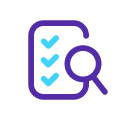Download our E-BOOK
Mobile App Analytics: What You Really Need to Know
October 13, 2023
by Will Kramer
At Rocket Farm Studios, we operate under a fundamental belief: your marketing stack is as pivotal as your tech stack. And at the heart of a robust marketing stack lies mobile app analytics. Imagine launching an app without analytics—it’s akin to a fish out of water, flopping aimlessly until it’s too late to understand what went wrong.
But let’s be clear: having the right analytics tools in place isn’t enough. What you need is an analytics-driven culture. A team that starts each day eager to dissect app performance, pivoting and adapting based on real-time data. This extends beyond having the right software; it demands a methodical approach to analytics, weaving it seamlessly into your operational DNA.
In this post, we won’t just scratch the surface; we’ll take a deep dive into the analytics that matter most for long-term success. Whether you’re an app developer, a marketing guru, or an executive, setting up the right infrastructure, process, and tools is non-negotiable. More importantly, it requires fostering a culture where analytics aren’t just numbers but narratives that drive action.
We’ll explore the specific metrics that should be the North Star for your growth strategy. These aren’t just statistical indicators to impress investors; they are diagnostic tools to refine user experience, bolster performance, and ultimately, secure sustainable growth. As we navigate through these essential metrics, you’ll come to see how each serves as a cornerstone, solidifying the foundation of your app’s success.
So read on, and equip yourself with the knowledge to build not just a product, but a well-oiled machine, finely tuned through data-driven decisions.
Welcome to the world where analytics doesn’t just illuminate your path; it paves it.
Defining Mobile App Analytics
Let’s set the baseline first. Mobile app analytics is the practice of gathering and analyzing data generated from user interactions within an application to gain insights into user behavior, app performance, and overall engagement. This includes metrics such as user acquisition, retention rates, session length, in-app purchases, and more.
The data collected serves as the foundation for making informed decisions, helping businesses to refine their strategies, enhance user experience, and ultimately increase ROI. Understanding these key metrics offers a comprehensive view of your app’s health, pinpointing what’s working and what needs improvement.
Measuring data isn’t just a ‘nice-to-have’; it’s essential for taking targeted action. Without this analytics-driven approach, even well-designed apps can flounder in a competitive marketplace. By continuously monitoring and interpreting this data, app developers and marketers can tailor their efforts in real-time, making impactful changes that resonate with their audience and drive success.
Breakdown of Key Metrics
Understanding analytics is not merely about collecting data; it’s about dissecting it to fathom what makes your app tick. Here are some of the key metrics that are critical for continuous improvement:
1. User Acquisition
To scale your user base, focus on metrics like cost per install (CPI), user source, and first-time users. These metrics give a holistic understanding of how effectively your marketing campaigns are performing and where your most valuable users are coming from.
Cost Per Install (CPI)
A fundamental metric to monitor, CPI helps you understand how much each new user is costing you. High CPI values can be worrisome and may require you to optimize your advertising campaigns for better returns on investment (ROI).
User Source
Knowing where your users are coming from—be it social media, search engines, or direct traffic—is crucial. This data enables you to allocate your marketing budget more effectively, prioritizing channels that yield high-quality users.
First-Time Users
Monitoring the number of first-time users will give you insights into the initial appeal and discoverability of your app. A declining rate could indicate market saturation or issues with your acquisition strategies, signaling a need for immediate action.
2. User Engagement
In the realm of mobile app analytics, engagement indicators such as Daily Active Users (DAU), Monthly Active Users (MAU), and session lengths are paramount. These metrics serve as a preliminary gauge for user interest and engagement.
Daily Active Users (DAU)
This metric shows how many users interact with your app daily. A rising DAU is generally a positive sign, showing that your app is becoming an essential part of users’ daily lives.
Monthly Active Users (MAU)
This broader metric gives you a sense of your app’s longer-term stickiness. If MAU is high but DAU is low, you may need to delve into why users aren’t finding daily value in your app.
Session Lengths
The average amount of time a user spends in your app during a single session directly correlates to how engaging your app is. Short session lengths could imply that users are not finding what they’re looking for or are encountering usability issues.
3. User Retention
Keeping your retention rate north of 40% is non-negotiable. Track metrics like churn rate and lifetime value (LTV) to ensure that your users not only download your app but continue to find value in it.
Churn Rate
Churn rate indicates the percentage of users who stop using your app within a given timeframe. A high churn rate is a red flag that immediate remedial action is required to improve user satisfaction and retain customers.
Lifetime Value (LTV)
This metric helps you understand how much revenue a user will generate throughout their entire lifecycle. Keeping an eye on LTV in relation to your acquisition costs (CPI) is critical for maintaining profitability.
4. Revenue Metrics
In-App purchases, Average Revenue Per User (ARPU), and conversion rates are critical for gauging your app’s financial health. If these metrics are not on your dashboard, you’re navigating in the dark.
In-App Purchases
Tracking the frequency and volume of in-app purchases can provide insights into user behavior and preferences, helping you tailor your offerings and improve monetization strategies.
Average Revenue Per User (ARPU)
Understanding how much, on average, each active user contributes to revenue enables you to better tailor your marketing and retention strategies.
Conversion Rates
Knowing what percentage of users move from being a free user to a paying customer, or from a casual user to a highly engaged user, is essential. Conversion rate optimization can be a game-changer in your revenue model.
5. App Performance
Your app should not only be functional but also efficient. Metrics like load time, crash rates, and API latency directly impact user experience and, consequently, your app’s rating.
Load Time
The time your app takes to load on a user’s device is a critical first impression. Slow load times can deter even the most interested user and negatively impact your retention rates.
Crash Rates
Users are less likely to return to an app that frequently crashes. Monitoring crash rates not only helps in improving user experience but also in avoiding negative reviews that can harm your app’s reputation.
API Latency
This is the time it takes for your app to make a round-trip to the server. High API latency could indicate inefficiencies in your backend infrastructure, leading to sluggish app performance and dissatisfied users.

Collecting Essential Data
The collection of data is but the first step in a multi-faceted journey toward continuous improvement and sustainable growth. Data in its raw form is of little value; the true worth emerges when data is transformed into actionable insights.
Accomplishing this necessitates the collaboration of various roles within an organization. It’s crucial to form a cross-functional team that includes Data Scientists, Product Managers, Marketing Executives, and User Experience Designers, among others. Below is an in-depth look at the experimental loop of Measure, Hypothesize, Test, and Tune.
1. Measure
The “Measure” stage serves as the foundation for the entire analytics cycle. Here, the focus is on capturing data for key performance indicators (KPIs) using sophisticated tools and methods. Accurate and comprehensive measurement acts as the empirical bedrock upon which hypotheses are formulated, tests are designed, and optimizations are executed.
Role: Data Scientists, Analysts
Objective: Continuously monitor key metrics
Process: Use advanced analytics tools to measure how your key metrics are performing. Set up real-time dashboards to keep stakeholders informed.
Significance: This sets the baseline for your future actions. Without accurate measurement, the subsequent steps in this loop will lack direction and effectiveness.
2. Hypothesize
In the “Hypothesize” phase, stakeholders analyze the measured data to form educated guesses or hypotheses about potential areas of improvement or optimization. This step represents the interpretive link between raw data and potential solutions. It’s where data starts to gain contextual meaning, allowing for targeted actions.
Role: Product Managers, User Experience Designers
Objective: Formulate hypotheses based on data insights
Process: Based on the data collected, generate hypotheses that can lead to improvements. If session lengths are dropping, one hypothesis could be that a recently added feature is confusing users.
Significance: This step acts as the bridge between raw data and potential action plans. It is essential for targeting specific areas for improvement and sets the stage for experimentation.
3. Test
The “Test” stage involves executing controlled experiments to verify or refute the hypotheses. This typically employs A/B testing methodologies or similar scientific techniques to compare different variants and gauge their effectiveness. The objective is to obtain statistically significant results that either validate or reject the hypothesis, providing a data-backed basis for subsequent actions.
Role: Marketing Executives, Data Scientists
Objective: Validate or invalidate hypotheses
Process: Utilize A/B tests, control groups, or other experimental methods to test the hypotheses. Ensure the tests are statistically significant to draw reliable conclusions.
Significance: This step provides empirical evidence that either supports or refutes your hypotheses, thereby eliminating guesswork. It’s essential for validating the direction of your adjustments.
4. Tune
Upon obtaining results from the testing phase, the “Tune” stage involves implementing the validated changes into the application. These can range from minor tweaks to major overhauls, depending on the test results. This step embodies the actualization of insights, making it the most critical part for effecting measurable improvements in the app’s performance and user experience.
Role: Product Managers, User Experience Designers, Developers
Objective: Optimize app performance based on test results
Process: Implement changes—be it feature removal, UI improvements, or algorithmic adjustments—based on the conclusive evidence gathered during testing.
Significance: This is where the “rubber meets the road.” Your hypotheses and tests are of little use if you don’t act on them to bring about measurable improvements.
5. Repeat the Loop
The “Repeat the Loop” phase signifies the iterative nature of this process. Once one cycle of measuring, hypothesizing, testing, and tuning is complete, the loop starts anew. This step highlights the ongoing commitment to continuous improvement and agile responsiveness, reinforcing the need for regular reassessment and recalibration based on new data and evolving user expectations.
Role: All Stakeholders
Objective: Continuous improvement
Process: Once a cycle of measuring, hypothesizing, testing, and tuning is complete, start again. Use your newly acquired data and insights to refine your hypotheses and tests.
Significance: Success in the mobile app landscape is not a one-time achievement but an ongoing endeavor. Continuous cycles of this loop ensure that your app adapts and evolves with changing user behaviors and market dynamics.
Turning Data into Action
Turning data into actionable insights is far from just a tactical operation—it’s a strategic imperative woven into the very fabric of your organization’s goals. From enhancing user satisfaction and achieving higher retention rates to fueling revenue growth, the stakes couldn’t be higher.
1. Process
To reap the rewards of this data-driven approach, you must institutionalize a well-defined analytical process. Adopting an experimental loop that consistently captures data, analyzes it, and iterates based on insights, makes continuous improvement an indelible part of your organizational DNA. This isn’t merely a ‘nice-to-have’; it’s a ‘must-have’ for surviving and thriving in today’s cutthroat digital ecosystem.
2. Culture
But an effective process alone won’t suffice. The commitment to this continuous cycle of learning and improvement must be embedded in the culture of the organization. This is not a task solely for data analysts or product managers; it’s a collective responsibility. Every stakeholder, from developers and marketers to executives, needs to breathe this culture, waking up each day with a renewed focus on what the latest data tells us and how we can act on it.
3. Tools
Now, let’s talk about tools. No matter how robust your process or how analytics-focused your culture, you need the right tools to turn your data into actionable insights. These tools should offer real-time analytics, advanced segmentation capabilities, and intuitive dashboards that provide a snapshot of your app’s health.
Tools like Google Analytics for Mobile, Mixpanel, or Amplitude serve not as mere utilities but as the linchpins that bring your process and culture together. These platforms don’t just collect data; they translate it into narratives that guide your strategic decisions.
To summarize, the key to long-term success in the rapidly evolving digital marketplace is a symbiotic relationship between process, culture, and tools. Each element reinforces the other, and the absence of one can derail your entire analytics strategy. Committing to this triad ensures that your organization isn’t just data-informed but data-driven, primed for sustainable growth and long-term success.

Best Practices for Leveraging App Analytics
The effective utilization of mobile app analytics is not just a set-it-and-forget-it exercise; it demands ongoing attention and refinement. Below are some best practices that serve as the linchpins for not just data collection and analysis, but for driving actionable, data-informed strategies that align with overarching organizational objectives.
1. Automate Data Collection
Leveraging automation in data collection ensures that you are continuously gathering the most up-to-date information. Utilize robust analytics tools that provide real-time data and automated reports to keep stakeholders informed without manual intervention.
Automation simplifies the complex task of data collection, allowing teams to focus more on analysis and action, thereby accelerating the decision-making process.
2. Custom Dashboards
Tailored dashboards allow for a more focused view of the metrics that are most relevant to your organization’s goals. Configuring these dashboards ensures that you can assess your app’s performance at a glance, providing immediate insights.
Custom dashboards streamline the data monitoring process, making it easier for decision-makers to quickly understand performance indicators, ultimately contributing to more agile and informed decisions.
3. Data Integration
Integrate your mobile app analytics with other data repositories like CRM systems, marketing platforms, or financial databases for a comprehensive understanding of your business landscape.
Data integration provides a 360-degree view of your business, allowing for more nuanced strategies that take into account all aspects of user interaction and business performance.
4. Regular Audits
Periodically reviewing and auditing the data ensures that it remains accurate, reliable, and consistent. This step safeguards the integrity of your analytics and makes certain that you are working with dependable data.
The integrity of data is essential for any analytics-driven endeavor. Regular audits ensure that the decisions you make are grounded in accurate and reliable information.
5. User Segmentation
Subdivide your user base into smaller groups based on behavior, demographics, or other criteria to better understand different user needs and preferences. This allows for tailored marketing strategies, feature developments, and customer experiences.
User segmentation enables a more personalized user experience, which is crucial for improving engagement, retention rates, and ultimately, business revenue.
6. Iterate and Update
Keeping your app dynamic is key to staying competitive. Continuously review your analytics to make incremental changes or even major overhauls as required by the data.
Regular iterations ensure that your app remains aligned with user expectations and industry trends, making it more resilient to market pressures and more responsive to opportunities.

Final Thoughts
The iterative cycle of mobile app analytics—where insights are converted into actionable steps, which in turn generate further insights—is not merely a technical process but a critical business strategy. This never-ending loop is crucial for adaptive growth and competitive longevity. By embedding this approach into your organizational framework, you create a dynamic system where data informs decisions, and those decisions spark growth and innovation.
Rocket Farm Studios stands ready to assist decision-makers in ingraining this methodology deeply into both the app’s operational logic and the organization’s strategic planning. With specialized tools for real-time analytics, we ensure that the data you rely upon is accurate, timely, and deeply integrated into your decision-making processes. The result is a robust, agile organization that is not just responsive to market shifts but anticipatory of them.
To ignore or delay the incorporation of such a proven strategy into your organizational DNA is not just a missed opportunity but a substantial business risk. Rocket Farm Studios offers the precise expertise and tools you need to make analytics a foundational element of your long-term business strategy. The time for decision-makers to act is now, to ensure that your organization and its apps are not just surviving but thriving in today’s fast-paced digital marketplace.
Ready to turn your app idea into a market leader? Partner with Rocket Farm Studios and start your journey from MVP to lasting impact.”
Teams for App Development
We help companies build their
mobile app faster with go to market strategy

Technology and UX Audits

Early Design Sprints

MVP Creation

App Store

Growth Teams
Download Our Free E-Book
Whether you’re launching a new venture or scaling an established product, Rocket Farm Studios is here to turn your vision into reality. Let’s create something extraordinary together. Contact us to learn how we can help you achieve your goals.



